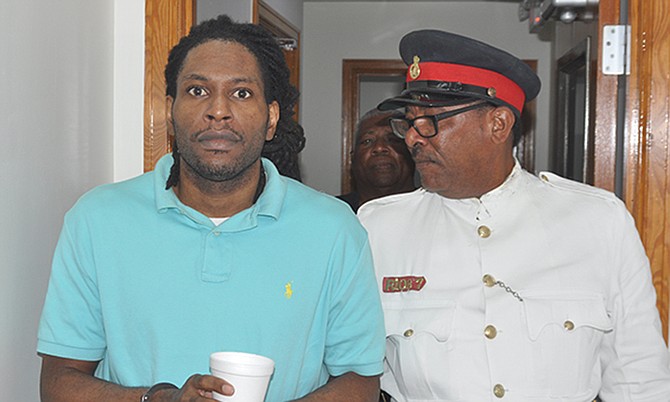By DENISE MAYCOCK
Tribune Freeport Reporter
dmaycock@tribunemedia.net
A WOMAN who was found murdered nearly three years ago on Valentine’s Day in Eight Mile Rock, Grand Bahama had been strangled and immersed in water, the Grand Bahama Supreme Court heard yesterday.
Hospital pathologist Dr Mandy Pedican took the stand yesterday in the trial of 33-year-old Dwayne Belizaire, who is charged with the murder of Margaret Smith on February 14, 2017 at Sea Grape, Eight Mile Rock.
Justice Estelle Gray Evans is hearing the case. A jury of eight men and four women has been impaneled. Erica Kemp of the Office of the Attorney General is appearing on behalf of the Crown, and Jethlyn Burrows is representing Belizaire.
According to Dr Pedican, she performed an autopsy on the deceased on February 17, 2017, in the presence of two police officers, and her fellow colleague, pathologist Dr Ana Tancawan.
She noted that Smith, an otherwise "very healthy woman," died of "manual strangulation and immersion."
Dr Pedican said the deceased sustained injuries to the neck. She observed red marks under the chin along the jawline, as well as abrasions, and a large injury in the middle of the neck.
She also noted that there was multiple haemorrhaging on the thyroid cartilage, which supports strangulation. There were also abrasions on the right side of the neck which she said could have been caused by a sharp-edged instrument.
Smith had also suffered superficial abrasions on the arm, and multiple lesions on the dorsal aspect of the right lower thumb, which Dr Pedican described as possible defence wounds sustained when “warding off an attack or protecting oneself from an attack.”
The deceased had also been bitten on the left arm. There were also various injuries to her back caused by a sharp-edged instrument, and an injury to the left temple.
Dr Pedican also testified that the deceased had some fluid in her sinuses. She explained that this could have happened if the deceased’s head was dunked into the water while breathing.
A rape kit was also conducted by the pathologist, who noted that the victim had vaginal abrasions.
“They looked haemorrhagic, which suggests haemorrhaging in the area,” said Dr Pedican.
The pathologist also noted that there was an injury in the bladder/genital inner region, which she described as “very haemorrhagic usually indicative of some blunt force trauma.”
Dr Pedican collected various samples from the deceased, including blood, and swabs. She said the samples and rape kit were sealed and handed to Det Corporal Damien Burrows, one of two officers present at the autopsy on February 17 at the morgue.
Dr Pedican indicated that the deceased’s lungs weighed twice the normal weight.
When asked by Prosecutor Kemp whether a person could strangle themselves to death, Dr Pedican said it was not possible. She explained that a person using their own hands would only render themselves unconscious but would not die and would later regain consciousness.
Under cross-examination, Mr Burrows asked Dr Pedican if a rape kit was requested.
Dr Pedican said that it was not requested and explained that a pathologist would make the call whether it is warranted based on the circumstances.
“The circumstances dictate the kind of autopsy…and, in this case, it was an undressed female, and so we have to look at the case in this light,” she explained.
Also testifying was Dr Ferdinand Fermal, of the Accident and Emergency Department at Rand Memorial Hospital.
He said Dwayne Belizaire was accompanied by a police officer at the A&E Section around 11.30am on February 18, 2017.
Dr Fermal collected blood samples from Belizaire. During a physical examination of the defendant, he noted superficial wounds or linear abrasions to his back and left side.
The emergency room physician also took note of injuries on the joints of his left hand, as well as scratches and abrasions which could have happened within three to 12 hours of blunt force trauma being inflicted.
The trial resumes today.





Commenting has been disabled for this item.